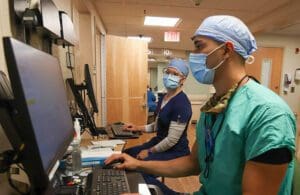
Image courtesy of Wikimedia Commons
While the present adoption of real-world data (RWD) and real-world evidence (RWE) remains early, such data promise to accelerate regulatory decision-making and support the approval of new indications for drugs already on the market.
“We’re now seeing real-world data being used and consulted almost 100% of the time to design a protocol for a study,” said Jeff Elton, CEO of ConcertAI. “That was not the case three or four years ago. That’s a pretty fast transition.”
It also helps that the FDA has also sharpened its focus on RWD and RWE. For example, late last year, the agency published proposed guidance related to data standards for product submissions with RWD. The agency also weighed in on the use of RWD and RWE to support regulatory decision-making for drugs and biological products with specific advice for data from electronic health records and medical claims.
Elton said that such guidance gives the industry a clearer sense of “what good looks like.”
A recent Deloitte report concluded that pharma companies should “convene RWD ecosystems to better understand disease, inform patient-centric protocol design, and expand the use of real-world evidence (RWE) in regulatory submissions.”
RWD and RWE don’t replace the need for randomized control trial data. “That’s still a very high standard,” Elton said. But RWD and RWE represent additional data sources that can complement randomized clinical trials.
On a related note, a November 2021 analysis published in JAMA found that RWD could complement post-approval confirmatory trial requirements but concluded that RWD is unlikely to replace such requirements.
Such post-approval studies in oncology, for instance, often have narrow patient populations. “You might be looking at third- or fourth-line care,” Elton said. “Standard of care could work pretty well, and clinicians tend to prefer things they have reasonable confidence in,” he added. “You have a pretty high bar to bring a new medicine forward, so you tend to focus on where things don’t work.”
On the other hand, RWD and RWE can inform clinical trial design and complement regulatory submissions by aiding in interpreting trial data.
A significant number of clinical trials in oncology are small. And RWD and RWE can provide valuable context when the number of patients in a clinical trial is limited. “We’re thinking about evidence generation differently,” Elton said. “As we make these trials smaller, we want to continue collecting data afterward.”
FDA is aiming to use RWD and RWE to assist with its assessment of long-term benefit and safety surveillance.
Such data plays a role in the FDA’s breakthrough therapy designation program, which accelerates clinical development for drug candidates addressing an unmet clinical need. “This is not about sloppiness. In fact, it is quite the opposite,” Elton said. “It’s highly vigilant, and there’s a lot to do with using data to get needed medicine through faster.”
As the pandemic continues in 2022, demand is high to track COVID-19–related stats. “We’re now tracking test dates, test outcomes, test type, vaccination, vaccination date and vaccination source,” Elton said.
Additionally, RWD and RWE can highlight failure points and inadequacies in clinical trials or if a drug demonstrates unique efficacy or a safety improvement. “All sorts of things may be part of the calculus about why a program is promising for patients, but real-world data is in every single one of the steps,” Elton said.
Filed Under: clinical trials, Drug Discovery





Tell Us What You Think!
You must be logged in to post a comment.